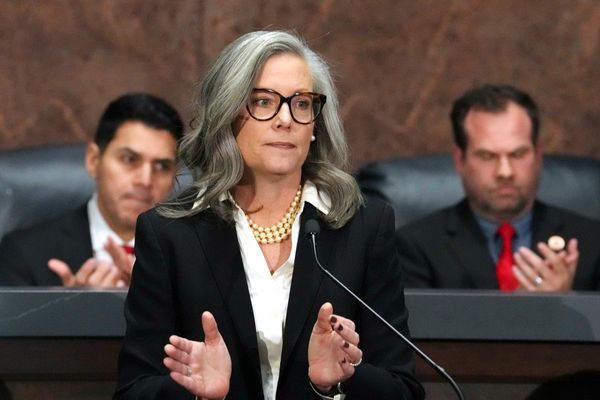
DeepSeek’s recent release of its powerful R1 AI model, and its claims of the comparably low costs it says it spent to create it, erased hundreds of billions of market value this week and incited panicked soul searching inside some of the Magnificent 7.
But for Amazon, at least publicly, company executives are using the explosion of interest as a sales pitch for Amazon’s cloud AI strategy which, much like its online shopping playbook, rests in large part on a wide selection of products or services for customers to choose from. In AWS’s case, that means giving its business customers access to a wide range of AI models to utilize, now including DeepSeek’s R1, which is an open-source model.
In an interview with Fortune on Friday, shortly after Amazon announced multiple ways that business could begin testing the R1 model natively through its cloud computing arm, AWS director Ankur Mehrotra made the case that R1’s out-of-nowhere rise is exactly the type of occurrence that AWS’ AI approach is built for.
“Our whole strategy when we started building our Gen AI capabilities… was that 'Hey, we think that no one model will be sufficient to meet all customers needs' … we're seeing that it has proven to be true.”
Told by this reporter that Amazon leaders seem to be enjoying a bit of a victory lap -- AWS CEO Matt Garman also promoted the company's AI strategy in LinkedIn posts this week -- Mehrotra smiled. “It’s victory for customers,” he quipped.
But a reality check will arrive in the next week, when Amazon reports its fourth-quarter financial results on February 6. Last quarter, AWS posted its largest quarterly operating profit in its history even amid massive investments in Gen AI infrastructure. AWS’s operating margin was boosted two percentage points in the quarter by an accounting change related to how Amazon judges the useful life of its data centers. Another contributor to expanded margins in AWS was a more “measured” pace in hiring.
As of Thursday, AWS customers could start accessing R1 through AWS Bedrock Marketplace, which offers a choice of more than 100 foundation models, large and small, for both generalized and specialized use cases. The service includes the ability to deploy the model with guardrails to help businesses guard against the model spewing outputs that may include unsafe or inappropriate content. Earlier in the week, others, including the AI chipmaker Cerebras, began offering the model, hosted on US servers, to enterprises. And on Thursday, Microsoft CEO Satay Nadella, said that its Azure could service would offer DeepSeek to customers.
AWS's Mehrotra said it’s too early to know which exact business use cases DeepSeek's R1 model will be most popular for — whether it be for customer service, or coding or complex math problems for which the model’s benchmarks have been strong. But R1’s unique “chain of thought” approach to reasoning — which basically involves the model thinking out loud, or explaining to the user how it’s going to come up with an answer — means its responses aren’t always the fastest and might not be right for certain business applications.
“It’s interesting the kind of trade offs that are built into the model,” the AWS exec said. “It spends more time thinking and for certain applications it may be okay for the model to take more time but give a more accurate answer, versus another model – let’s say [our] Nova models that are very fast in terms of response time – and certain applications may have that requirement.”
“It’s all about model choice,” he added. “I can’t emphasize enough how much it matters to customers.”
The company’s next earnings report, plus those over the next year, will provide more tangible proof of how Amazon’s AI strategy is resonating.
Are you a current or former AWS employee with thoughts on this topic or a tip to share? Contact Jason Del Rey at jason.delrey@fortune.com, jasondelrey@protonmail.com, or through messaging apps Signal and WhatsApp at 917-655-4267. You can also contact him on LinkedIn or at @delrey on X, @jdelrey on Threads, and on Bluesky.







